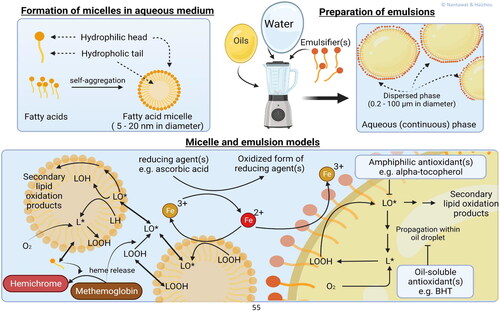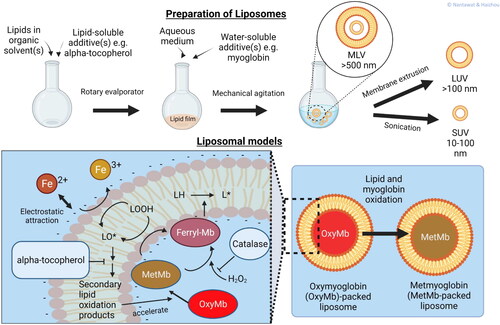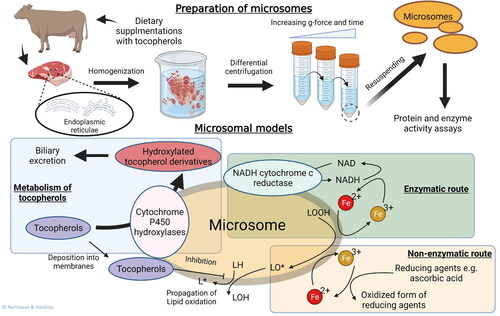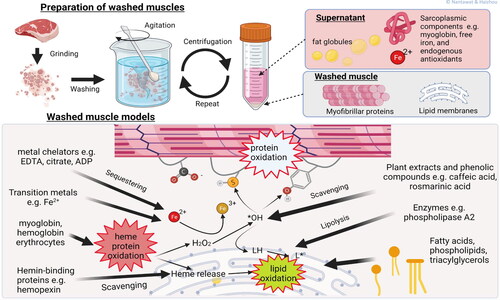Figures & data
Figure 1. Fatty acid micelle and emulsion models. Above their critical micellar concentration, amphiphilic compounds tend to spontaneously self-aggregate to form lipid micelles by hiding the hydrophobic part inside and exposing the hydrophilic part to the aqueous medium. Amphiphilic emulsifiers can surround and stabilize oil droplets that are formed by physical agitation of the mixture between oil and aqueous medium. In this figure the roles of water-soluble, oil-soluble, and amphiphilic antioxidants on lipid oxidation catalyzed by free iron in the Fenton reaction scheme are presented. Due to their hydrophilic part, fatty acids and lipid hydroperoxides may jump in and out between lipid micelles and interact with aqueous compounds, e.g., Mb and Hb.

Table 1. Main characteristics, advantages and disadvantages of emulsions, fatty acid micelle, erythrocyte, meat homogenate and washed muscle models.
Figure 2. Liposome models. A liposome preparation scheme shows how water- and lipid- soluble additives can be incorporated into the lipid vesicles. The lipid-soluble additives stay within the lipid bilayers, while the water-soluble additives in the aqueous medium come into contact with the lipid bilayers via different modes of interactions, e.g., electrostatic attraction, hydrophobic interaction. Liposomal models for studying lipid oxidation by free iron and Mb are presented.

Figure 3. Microsome models. A simplified preparative procedure of microsomes from muscle tissues is illustrated. The presence of membrane-bound enzymes make microsomes versatile models for studying both enzymatic- and non-enzymatic lipid oxidation pathways as well as metabolism of dietary antioxidants can be studied using microsomal models. Muscle-derived microsomal models also connect between dietary supplementation studies and lipid oxidation studies.

Figure 4. Washed muscle models. The washed muscles consist primarily of myofibrillar protein, connective tissues, and lipid membranes as the result of exhaustive washing of minced muscle tissues to remove water-soluble components, e.g., sarcoplasmic proteins and low molecular weight compounds. External pro-oxidants and antioxidants, as well as muscle components of interest can be added back to the washed muscle for studying their individual and interaction effects on lipid oxidation.

